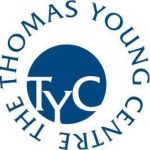
- This event has passed.
TYC Seminar: Machine-learning-accelerated photodynamics simulations in complex environments towards new materials and medicines – Steven Lopez, Northeastern University
21 March @ 1:30 pm – 3:00 pm
Venue: Theoretical, Computational and Data-driven Chemistry (TCDC) B10, Molecular Sciences & Research Hub (MSRH)
https://www.imperial.ac.uk/visit/campuses/white-city/

Steven Lopez, Department of Chemistry & Chemical Biology, Northeastern University – Machine-learning-accelerated photodynamics simulations in complex environments towards new materials and medicines
Photochemical reactions are increasingly important for constructing value-added, strained organic architectures. Direct excitation and photoredox reactions typically require mild conditions to access therapeutic gases (e.g., carbon monoxide) and new synthetic methodologies. A priori design of photochemical reactions is challenging because degenerate excited states often result in competing reaction mechanisms to undesired products. Further, a lack of experimental techniques that provide atomistic structural information on ultrafast timescales (10–15 – 10–12 s) has limited general rules about these reactions. Computations, however, provide a path forward. I will discuss how my group has leveraged multiconfigurational complete active space self consistent field (CASSCF) calculations, non-adiabatic molecular dynamics, and machine learning (ML) techniques to understand reaction mechanisms and enumerate new reaction pathways. I will introduce our new open-access machine learning tool, Python Rapid Artificial Intelligence Ab Initio Molecular Dynamics (PyRAI2MD), which enables 100,000-fold longer simulations than current NAMD simulations with multiconfigurational quantum chemical methods. I will describe how PyRAI2MD has enabled the first ML-NAMD simulations with QM/QM (CAS/HF) training data. The presentation will explain the origins of the reactivities and selectivities of photochemical pericyclic reactions and CO-evolving reactions in aqueous environments.
Hanbo Yang (PhD student of J. Frost), Imperial College London – Nonadiabatic dynamics in the Y6:Rubrene upconverting system
Authors: Hanbo Yang, Pranay Venkatesh, Alex Gillett, Jenny Nelson, Jarvist Moore Frost.
Abstract: One route to increase the power conversion efficiency of photovoltaic cells (solar power) is to manipulate the black-body spectrum of the sunlight before it enters the cell. Upconversion involves taking multiple lower energy photons and converting them into single higher energy photons. This can then be used with a large bandgap solar cell (such as a homopolymer organic solar cell, or highly stable and earth abundant oxide and chalcogenide semiconductors) to make a device that increases the overall power conversion efficiency.
In December 2021, Izawa and Hiramoto [1] proposed a solid-state bilayer architecture with solution deposited a non fullerene acceptor molecule from organic solar cells and evaporated rubrene. This has the highest upconversion efficiency of any solid-state upconverter architecture, but the working mechanism & explanation for this improvement has not been directly proved.
In this work we have been combining computational photochemistry and nonadiabatic dynamic modelling methods, along with spectroscopy, to understand the physical-chemistry of the studied bilayer device.
SHORT Programme – 21th March 2024
- 13:30 – 13:45 Early Career Talk (15 min incl. questions) – Hanbo Yang, Imperial College London – Nonadiabatic dynamics in the Y6:Rubrene upconverting system
- 13:45 – 14:30 Main speaker talk (45 min incl. questions) – Steven Lopez, Northeastern University (US) – Machine-learning-accelerated photodynamics simulations in complex environments towards new materials and medicines
- 14:30 – 15:00 Coffee and networking
